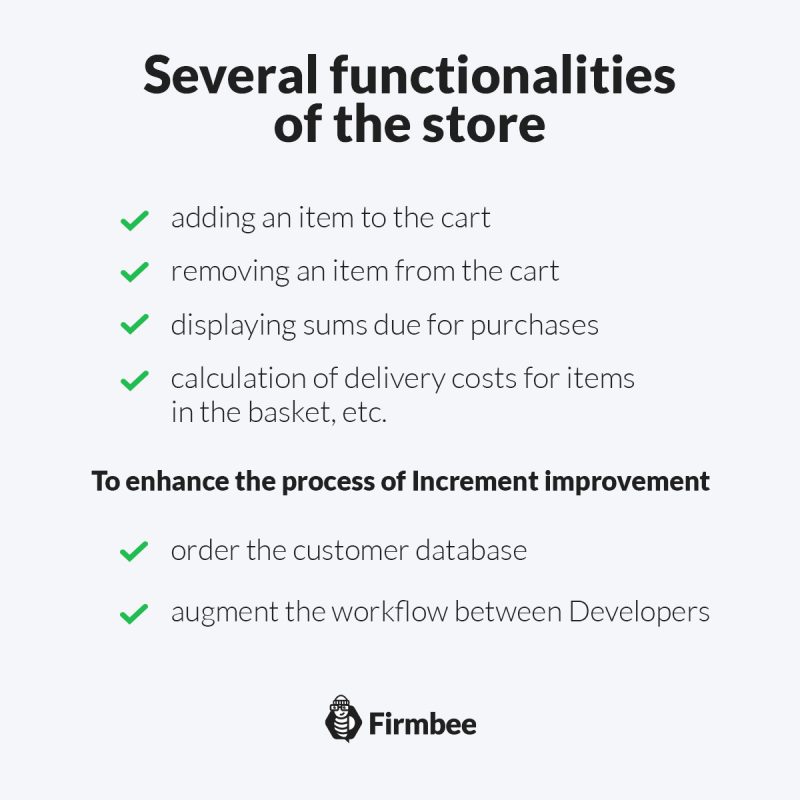In today’s article we want to defining increment. While working on a Product, the lucky few successive entries from the Product Backlog can become Increment. In other words, the Product Owner selects which Product functionality from the Product Back to implement. The Development Team transforms it into a working, valuable Product functionality during one Sprint.
Defining Increment – table of contents:
- Introduction – defining Increment
- Increment vs. Product Goal and Sprint Goal
- When does the work done become an Increment?
- Summary
Introduction – defining Increment
An Increment is the latest completed and improved version of a Product that has business value and is ready for release during a Sprint. An important part of its definition is the statement that this is the sum of the previous state of the Product together with its amendments added in the current Sprint. Thus, it does not define only the new functionalities supplemented to the Product, but also – or primarily – their integration with its original version together with all the improvements and fixes it has undergone.

Increment vs. Product Goal and Sprint Goal
Each Sprint should produce at least one new Increment – it is the responsibility of the entire Scrum Team. So how does it relate to the Sprint Goal? You could say that Sprint Goal is the answer to why we should construct one. However, keep in mind that in a single Sprint the team can create several Increments, the sum of which combine into a Sprint Goal.
Thus, an example Sprint Goal might be the following task: Create a “shopping cart” functionality in an online magic accessories store.
However, the components of the Increment will include several functionalities of the store such as:
- adding an item to the cart
- removing an item from the cart
- displaying sums due for purchases
- calculation of delivery costs for items in the basket, etc.
The team needs to envision that each Increment is a step forwards toward achieving the Product Goal. Therefore, to enhance the process of its improvement, it can:
- order the customer database
- augment the workflow between Developers
That’s because although they are not directly related to improving the current state of the Product, they have a huge impact on better and swifter realization of the Product Goal.

When does the work done become an Increment?
The measure of a successful Increment is whether it is practical. In other words, the work done becomes an Increment only when it meets the Definition of Completion, which we will write about in a separate article. This definition uniquely states what changes and improvements have occurred to the Product. Based on the Definition of Completion you can test the Increment to assess if it really introduces improvements to the Product and if it brings the claimed business value.
If the result does not meet the standards of Definition of Completion, the project goes back to the Product Backlog. What comes next can take the following paths:
- The team may finish it during the next Sprint
- The project may be canceled
- The team may decide to keep it in the Product Backlog for future execution – once the team works out the way to overcome the obstacles
If the team manages to produce an Increment in a Sprint, it moves forth to get evaluated during Sprint Review. However, if necessary, it may be shown to Stakeholders even before the end of Sprint. The ultimate decision to release it belongs to the Product Owner.
Defining Increment – Summary
An increment is a fresh, brand-new version of a Product ready for release. It includes all the updated modifications and improvements made in a Sprint. In other words, it is the latest stable, releasable version of the Product. Even several Increments can originate and develop during one Sprint as long as they all meet the Definition of Completion.
If you like our content, join our busy bees community on Facebook, Twitter, LinkedIn, Instagram, YouTube, Pinterest.
Author: Caroline Becker
As a Project Manager, Caroline is an expert in finding new methods to design the best workflows and optimize processes. Her organizational skills and ability to work under time pressure make her the best person to turn complicated projects into reality.
Scrum Guide:
- Glossary of basic terms, roles and notions
- What is Scrum?
- Scrum values
- How to implement Scrum in your company?
- Scrum Team - what is it and how does it work?
- Who is a Product Owner?
- The most common mistakes of Product Owner
- Who is the Scrum Master?
- Characteristics of a good Scrum Master
- The most common mistakes of Scrum Master
- What statistics and metrics should the Scrum Master track?
- Cooperation between Product Owner and Scrum Master
- Development Team in Scrum
- The most common mistakes of Developers
- Scrum artifacts
- Scaling Scrum
- Sprint Backlog
- What is the Product Backlog?
- What are User Stories?
- Creating the best User Story with INVEST
- The most common User Story mistakes
- User Story Acceptance Criteria
- Estimation and Story Points in Scrum
- Planning Poker
- Team Estimation Game
- Defining Increment
- Scrum events
- What is Sprint in Scrum?
- Scrum Team Commitments - Product Goal, Sprint Goal and Definition of Completion
- What is a Burndown Chart?
- How to create and interpret a burndown chart?
- Advantages and disadvantages of the burndown chart
- Kanban boards in Scrum and Scrumban
- Velocity in Scrum - Speed of the Development Team
- Daily Scrum
- Sprint Planning
- Sprint Review
- What is a Sprint Retrospective?
- Common mistakes during a Sprint Retrospective
- Product Backlog nurturing


















